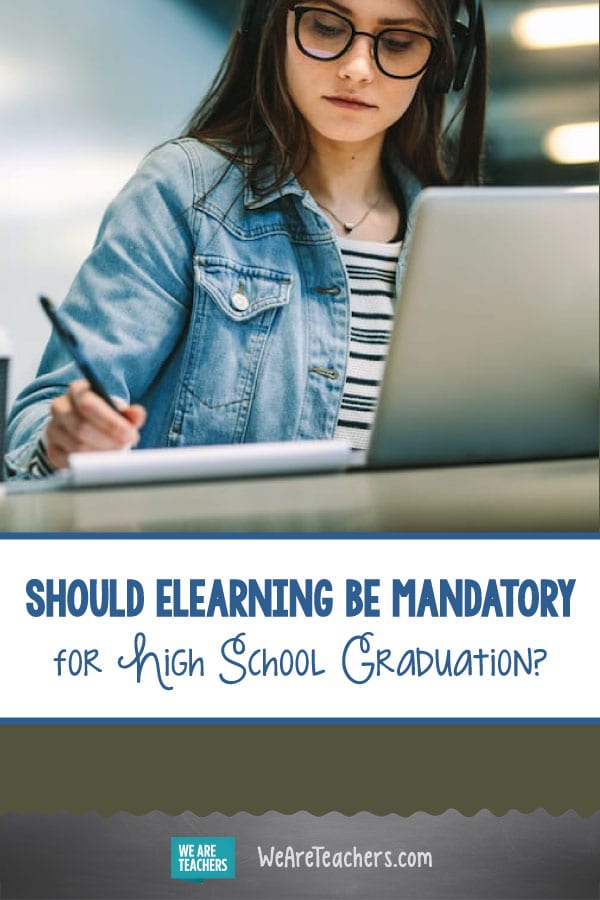I began my career as an eLearning teacher in 2003. And I’ve taught optional and summer eLearning courses at the secondary school level ever since. You could say I’m a supporter of eLearning via my engagement with the practice. And, I do see many benefits to this type of learning for many students.
But should eLearning be a mandatory requirement for all students to earn a high school diploma?
How can eLearning prepare students for the future?
In 2020, it is quite probable students will have to take an eLearning course at some point in their lives. This could be through a post-secondary course, career-focused course, or a Parents in Sport training module (I’ve completed all three).
The question is not if students will need the skills to navigate eLearning course—but when.
eLearning courses teach students valuable technological skills, such as downloading documents, communicating via email, and uploading attachments. They also educate students on how to create videos, infographics, and documents.
In addition to technology skills, students learn time management skills. They have to ensure they meet deadlines and keep on track of course activities and assignments within their own schedules. For athletes or students with after school jobs, this allows scheduling flexibility too.
[contextly_auto_sidebar]
What are the barriers to student success?
Although this is a relatively new form of learning, five states (Michigan, Florida, Alabama, Virginia, and Arkansas) have already made it mandatory for students to earn one eLearning credit before they earn their high school diplomas.
Unfortunately, this experiment has yet to see glowing results.
For example, one 2014 study noted that only 39% of rural students were successful in eLearning courses—mostly due to technical issues. Moreover, another study in 2017 discovered that students in Michigan had low pass rates in eLearning courses (55%), and eLearning course pass rates also had a 20% lower rate for students in poverty.
As an eLearning teacher, I know that access to technology, literacy skills, and independent learning skills are all essential to success in these types of courses. Students need reliable technology which can be a massive struggle for students in poverty or rural areas. They must also have the literacy skills to engage in the course curriculum, as well as create a self-imposed timeline of work and due dates.
Clearly, not all high school students have these skills. Moreover, the students who are lacking in these traits are often already struggling with school.
These barriers are acknowledged by eLearning education studies, and better results have been reported when “wrap around supports” such as tech labs, teacher tutoring/help sessions, and school support peer groups have been organized to help students earn their eLearning credits.
Should eLearning be a mandatory graduation requirement?
As an eLearning educator, I know that strong students will breeze through my courses—in fact, some thrive in the eLearning environment. Nevertheless, I’ve also seen many struggling students falter for all the reasons listed in this article.
Yes, proper supports such as eLearning classroom drop-ins, peer groups, and properly trained eLearning teachers can close the gaps for struggling students. But I also fear that these will become but another obstacle in their quest for high school diplomas.
Mandatory eLearning could save money in education as well as create important learning opportunities for the future in our highly technological society. But, what is the cost for our most vulnerable students? This is the question that educators need to answer before moving forward with mandatory eLearning programs.
Do you believe mandatory eLearning makes sense? Join us to discuss in our WeAreTeachers HELPLINE group on Facebook.
Plus the top reasons teachers avoid online learning.


